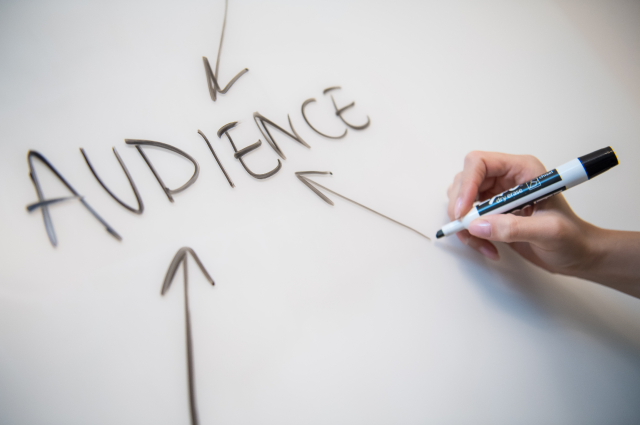Updated August 19, 2021
Understanding the differences between your B2B and B2C sales processes is key to maximizing what you get out of each. Keep reading to learn about four of the biggest differences between B2B and B2C sales to keep in mind while you strategize.
If you’re new to the world of sales – or if you’re debating a career switch – you may be regarding B2B vs. B2C sales. Sure, both types of sales involve working on getting a customer to purchase a product or service. But there are crucial differences between B2B sales and B2C sales. Understanding these differences could help you improve your sales results, so read on to find out everything that you need to know about B2B and B2C sales.
B2B Vs. B2C Sales
To understand the differences between the two, let’s define:
What are B2B sales?
Business-to-business sales involve one business selling a product or a service to another business.
For example, Amazon has a branch of its company called Amazon Web Services (AWS). Its purpose is to sell server space to companies that need it. People who work for AWS doing this would be making B2B sales.
Understanding B2C sales
B2C sales are when a company sells a product or service directly to a consumer instead of a company.
For example, Walmart runs ads in local papers to highlight its grocery deals for the week. This would be B2C sales since the company targets consumers with its ads instead of a company.
Distinguishing B2B vs. B2C
Decision-making process
One of the biggest differences between these two types of sales is how purchasing decisions are made. With a B2C client, you typically only need to convince one person to buy your product.
But with a B2B product, you may need to convince multiple stakeholders. This means you may need to use several different sales tactics while pitching to B2B clients to make sure you address the concerns of everyone in the room.
Price differences
Another big difference is how much each type of customer will be willing to spend on what you’re selling. The vast majority of B2C clients are going to have less of a budget for what you’re selling than their B2B counterparts.
Skilled salespeople adjust the approach they use to sell to each client accordingly. For example, pitching a completely customized solution to a B2B client may help you win their business. But those can be extremely costly. And if you try pitching a product with too high of a price tag to a B2C client, they may leave the room.
Speed
The amount of time you need to spend converting a client can also vary significantly depending on whether they’re a B2B or B2C buyer. B2C sales can move pretty quickly.
But B2B sales can be a very time-consuming process. They often take up to several months to complete and involve a wide variety of employees from your company and theirs.
That means if you’re attempting to sell your services to a B2B client, you need to pick your battles carefully. Don’t spend too much time on a prospect that isn’t promising. You risk missing out on other opportunities with higher chances of success.
Required expertise
B2B sales often require a more experienced hand than B2C ones. That’s because B2B salespeople deal with high-level decision-makers in large organizations. These people tend to have much more challenging questions and will ask you to demonstrate the capabilities of your product in more in-depth ways than most B2C buyers will.
Your Customer Dictates Your Sales Strategy
The main difference between B2B sales and B2C sales is the customer you’re selling to. But that’s not the only difference.
Who you’re selling to will also have a big impact on the best way to make a sale to that person. That’s why the optimal sales strategies for someone making B2B sales will differ from someone who’s making B2C sales.
These differences are most readily apparent in companies handling both types of sales. Let’s look at an example.
Microsoft has consumer-facing products (Xbox, personal laptops, etc.) and business-facing products (Microsoft Cloud, Microsoft Teams, etc.). Its sales strategies for each of these product lines will reflect the desired customers.
Microsoft will market its Xbox products more casually than it markets services like Microsoft Teams. That’s because individual consumers prefer a different marketing tone than corporations.
The key to maximizing your B2B and B2C sales processes is to chart a similar course. You need to make sure your strategies are built around the target customer instead of using uniform practices for all of your sales.
We’ll look at some specific examples in the next few sections.

Optimizing Your B2B Sales Process
Now that we understand how B2B sales work and how they differ from B2C sales, let’s look at some of the best ways to optimize your B2B sales process.
Integrate your marketing and sales teams
Marketing and sales each play an integral role in the B2B sales process. By bringing them together, you minimize miscommunication between the two teams and ensure that they’re both working toward common goals at all times.
There are a few different ways to handle this approach. One option is to create a sales funnel for both teams. That way, there’s visibility into each team from the other.
Another option is to bring your marketing and sales teams together for brainstorming and planning sessions at set intervals. You might do a weekly joint meeting so that leaders in both parts of your company get a regular chance to swap ideas and communicate with one another.
We cover more tactics to merge these teams in this article.
Optimize the lead management process
Managing your leads effectively is one of the most important aspects of B2B sales. So if you haven’t already invested time and energy into optimizing your lead management process, now could be the time to do so.
But you don’t necessarily have to do this alone. LeadLander can help you keep track of leads as they navigate your website. Accessing this information can make it much easier to determine where each of your B2B leads is in your sales funnel.
Learn how to breakthrough gatekeepers
B2B sales present several challenges. But one of the most complicated is that of the gatekeeper. Gatekeepers are employees within an organization who screen calls for the people making a buying decision in an organization.
That means to sell your product to a company, you first have to find a way to get in touch with someone within that business who can buy it. To do this, you’ll have to consistently find a way to convince gatekeepers to let you talk with decision-makers.
Here are some tips for how to do that:
- Avoid the gatekeeper altogether by reaching out to decision-makers via other avenues like their social media profiles
- Be kind to gatekeepers and try to get on their good side instead of treating them like an obstacle
- Try calling outside of normal business hours when busy decision-makers typically have more time for unsolicited calls
Map out your buyer’s journey
Another helpful way to improve your B2B sales process is to map out your buyer’s journey. When you look at the typical journey a buyer takes from when they first become a lead to when they become a paying customer, you gain valuable insight into how you can move that process along more efficiently.
If you map out your buyer’s journey step-by-step, you might find that many buyers get stuck in a particular stage of your sales funnel. You could then revamp that stage to fix the problem. Consider using a User Journey mapping tool like Whimsical.
Getting More Out Of Your B2C Sales Efforts
And again…merge your marketing and sales teams
We’re putting this point twice because it’s imperative to your B2C and B2B sales efforts. We already discussed some ways to do this above. But what we didn’t cover is how impactful LeadLander can be here.
Our platform is accessible to anyone in your organization — including everyone from your sales and marketing teams. It’s a simple tool that will allow your marketing and sales employees to track leads together in real-time. This is a fantastic way to keep those two teams connected.
Understand who you’re selling to
It’s also really important to understand who you’re selling to when working on B2C sales. You need to know your target audience before you can know the best way to sell to them.
You can create a target audience based on any combination of factors that you think will make someone more likely to buy your product or service. For example, you might use age, gender, geographic location, income, or any other factor to create your target audience.
There’s ultimately no right or wrong way to define your target audience. You just need to make sure that you understand it well before creating your sales and marketing strategies. Google Analytics is a great place to start to get a sense of your audience, then you can consider further segmentation and your remarketing efforts.
Increase your online presence
Studies have shown that 81% of customers look up products online before buying. That means one of the most impactful ways to start converting more B2C sales is to increase your online presence.
You can do that in several ways. One option is to improve your website with better content and improved SEO focus. LeadLander is a tool that can help you with this by showing you which parts of your website are performing best within your target audience.
You might also consider becoming more active on the social media platforms that your target audience uses. Sharing valuable content on these platforms is a great way to build a following and start funneling more leads into your website.

LeadLander Makes It Easy To Boost Your B2B And B2C Sales
Whether your company does B2B sales, B2C sales, or both, LeadLander is a tool that can immediately help you get more out of your sales processes.
Our platform will help you improve your pipeline accuracy, integrate your sales and marketing teams, and will provide you with a steady stream of warm B2C and B2B leads to fill your sales funnel.
If you’re serious about improving your sales results, you’ve got to check out LeadLander. We’re currently offering a free 14-day trial.
